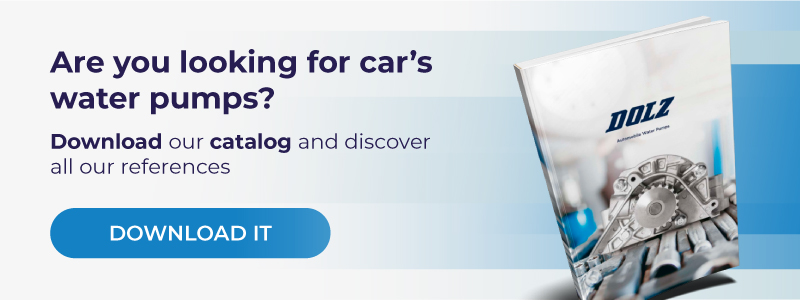An electric auxiliary water pump is different to the main water pump in that it is an electrically controlled motor. Its primary use is to circulate coolant through a bypass hose from the main coolant lines to a heater core.
Engines with electric auxiliary pumps become more efficient, as they generate less excess heat and oil consumption. Even though not all vehicles have one yet, these pumps are growingly popular in modern, low-emission and high-output engines that have to run within a small temperature range in order to maintain their efficiency.
The usefulness of an auxiliary electric water pump
Auxiliary electric water pumps are able to send hot coolant into the heater core regardless of the engine’s RPMs, providing hot/cold air to the cabin even when the engine is idling or off. The auxiliary coolant pump can continue to operate while the car has stopped, allowing coolant to circulate and to fully dissipate the heat from the supercharger.
This type of water pump is essential for passenger comfort, since it allows for sufficient heating even when passengers are driving in traffic or at low RPM. Also, many modern cars use this second pump to allow you to use the air condition for a period while the engine is off.
Note that unlike the main water pump, this one is not running all the time. The electronic control unit will regulate the auxiliary pump according to the needs of the moment.
To sum up, some of its unique advantages include:
- Facilitates demand-driven cooling of the vehicle.
- Saves on fuel.
- Enhances passenger comfort.
- Is efficient in cooling down power train components.
- Reduces emissions.

Related content: Peculiarities of an auxiliary water pump
Reasons to change your auxiliary electric water pump
The main reason these pumps fail is the electric motor’s natural age and wear. If this does happen, then the heater core will not be able to heat up and replacement will be necessary. Within age and wear, there are 5 common ways in which electric auxiliary water pumps can fail:
- Weep hole is leaking coolant, indicating that the dynamic seal has failed.
- The water pump leaking into the engine, making the oil milky and thin.
- Pump’s impeller fails and makes a chirping noise as it contacts the housing.
- The galleries in the water pump become plugged from sludge build-up.
- Electric motor fails due to a short in the wiring, making it inoperable.
Potential complications
A failed auxiliary water pump will almost never cause the vehicle to overheat. However, if inoperative, you might notice some of the following situations during driving:
- No warm air coming from the heater: since its primary job is to supply hot coolant to the heater core, the first symptom of a problem with this component would be no hot air blowing from the heater.
- Heater shows fluctuating heat: the temperature inside the vehicle is increasing or decreasing based on the driving mode, especially if there is a noticeable temperature decrease when the engine is idling.
- Windows defrost is not working: when windows fog up, the defrost mode is in charge of blowing warm air onto the windshield for clear vision. If the pump is failing, the windows will not defrost rather quickly.
- High-pitched buzzing sound: coming from under your dashboard, this might happen if there is an electrical short in the wiring, making the pump run faster than it should or continue to run after the engine is off.
How to replace an electric auxiliary water pump step by step
Once you have verified the condition of the electric auxiliary water pump and confirm its need for replacement, make sure to follow these steps one by one for an optimal replacement. Remember to always consider individual instructions proposed by the vehicle’s owner manual.
Auxiliary water pump replacement step-by-step:
- Drain the coolant from the system.
- Remove any interfering parts, if necessary.
- Disconnect the auxiliary water pump connector.
- Remove all the hoses connected to the pump.
- Remove all the mounting bolts and the auxiliary water pump.
- Install the new auxiliary water pump and tighten the bolts.
- Connect again the hoses back.
- Install all previously removed parts in the reverse order.
- Fill up the cooling system with indicated coolant to the required level.
- Bleed coolant system according to the service manual.
- Check coolant system for leaks.
And that’s it! You are done!
Remember to always test drive the vehicle by driving it around and monitoring the cooling temperature!

Discover our range extension of Auxiliary Electric Water Pumps
The importance of proper selection of auxiliary electric water pumps
A good quality electric auxiliary water pump will determine the time span of an optimal coolant system and performance in any modern vehicle. These pumps are not only used to make modern engines efficient but have enabled the cooling of batteries in hybrid and electric vehicles.
With a complete range of auxiliary water pumps of more than 60 references, Dolz offers its customers the best solutions thanks to personalized attention and the latest technology in the manufacture of water pumps for the aftermarket sector.
If you are looking for top-tier auxiliary electric water pumps, contact us and we will provide you with the information and support you need.
…yes we have!


